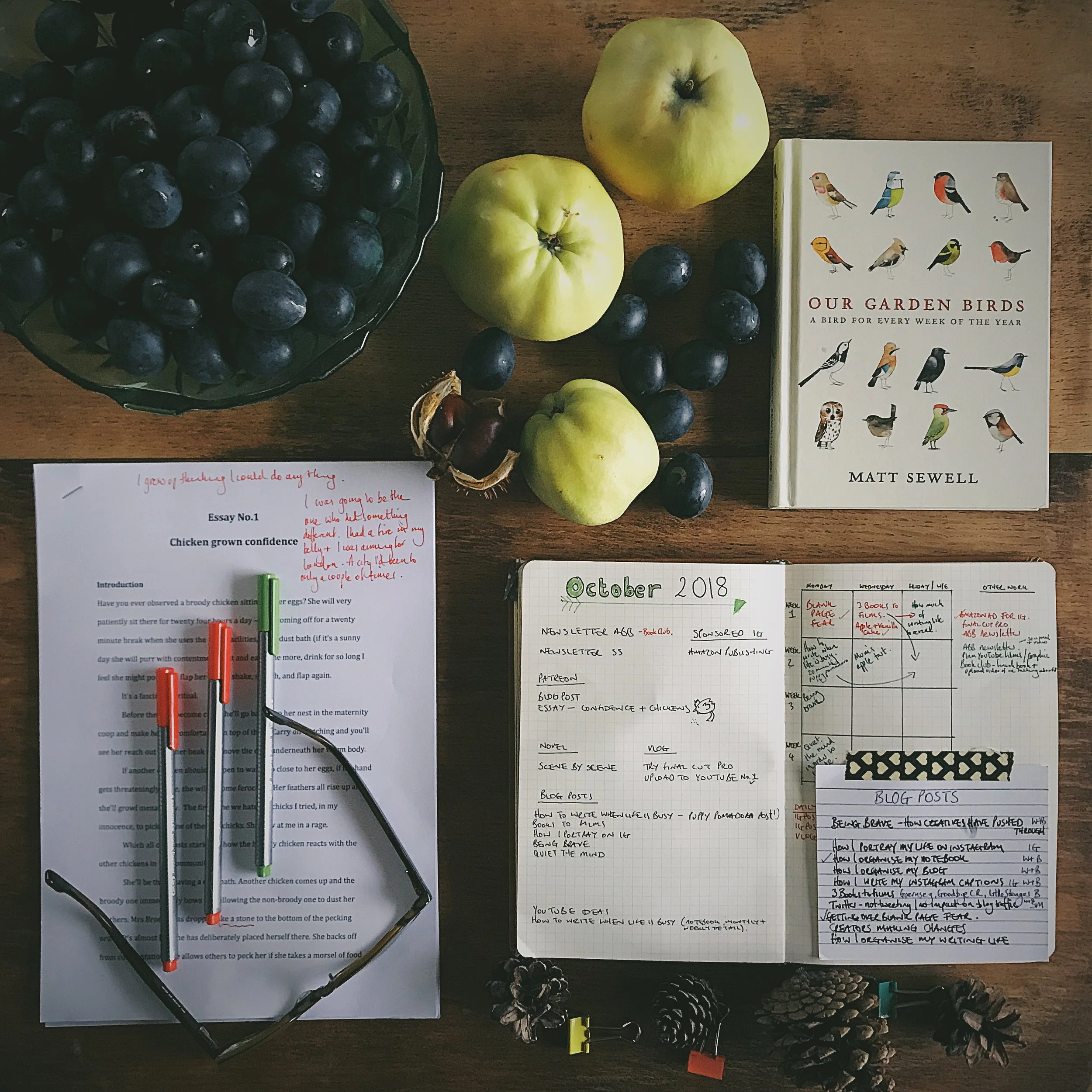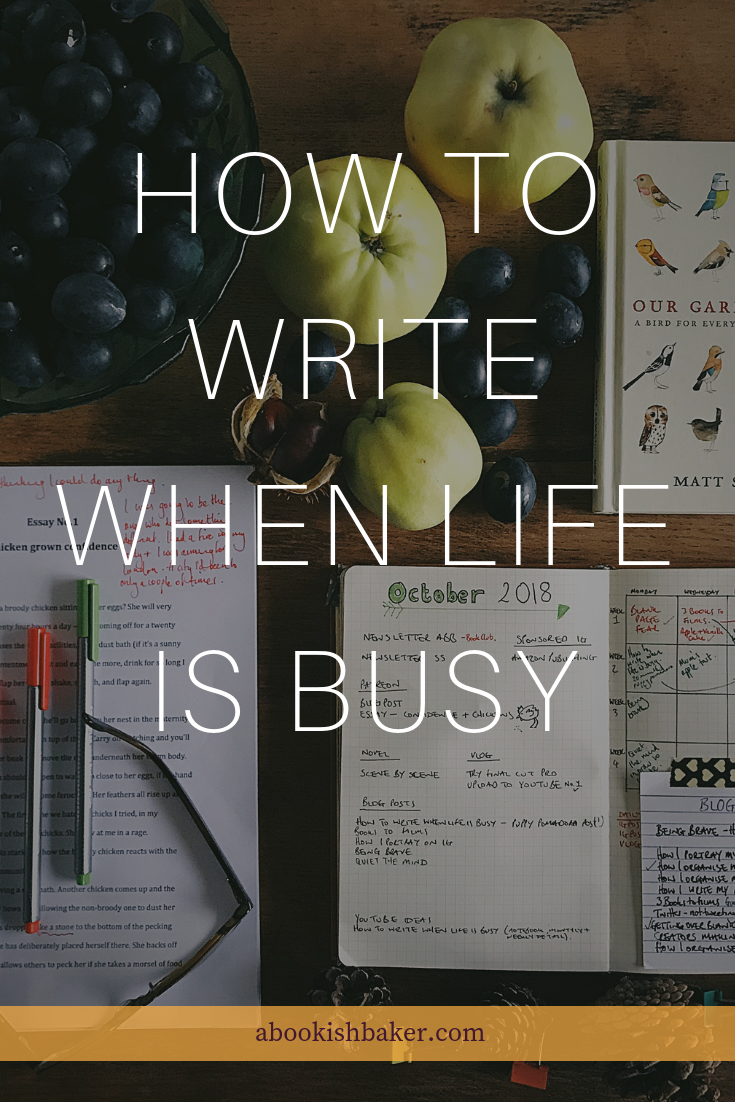September was always going to be the month where I stepped my work up a gear after taking much of the summer off.
I was looking forward to it. The children would be back at school and I would have the time to myself again to write my words, to bury myself in my work. I was going to work so hard.
Then we went and got a puppy.
I mean, what were we thinking? I had all these plans. It’s been five years since we last had a puppy and I’d forgotten how much work they can be. This one, PuppyFace, was a lot more energetic and curious. And she wasn’t as well toilet trained.
Bang goes my work. No writing for me.
Or so I thought.
In actual fact during the month of September I’ve written more words and started more projects than I ever have (as a freelancer). My blog stats have broken my own personal records, I’ve gained Instagram followers and a few more follows on YouTube. In terms of projects I’ve started an Instagram community book club, a weekly vlog and a Patreon account for my monthly essays about creativity in addition to writing three blog posts a week. I have also sent my monthly newsletters and made small steps with my novel-in-progress. Plus I’ve sold a number of my Sowing Stories blogging self-paced email course and published a number of sponsored posts on Instagram.
So how did I do it? How did I achieve all this during school hours whilst also training and looking after an eight-week-old puppy (and everything else I have going on with the chickens and ducks etc)?
Now firstly I should point out that I don’t have an office job. I don’t have a commute. I’m a freelance writer. This is my business, this is my job.
However, I thought I’d share my simple techniques in the hope that you might be able to adapt them to work around your life - whether you have a commute and an office job or children under the age of five - whatever it is that takes up the majority of your time.
I’ve realised that the three key points for how much I achieved in September are:
Planning. Both monthly and weekly.
Consistency.
The Puppy Pomodoro method.
The Twenty Minute Timer
Planning
In this post I write about how I’ve organised my writing week. I set out at the beginning of the month what writing projects I’d like to work on, then each week I break it down further. There’s no secret software or anything like that. It’s just a case of writing everything down clearly in my notebook in a monthly and weekly spread.
Every week I write three blog posts. These are the cornerstone of my work. I don’t always know what the blog posts will be about but I have a list of ideas that I’ll dive into for when I’m looking for a topic to write about. This one, for example, I’ve had on my list for a few weeks after someone on Instagram asked me if I had any tips on fitting writing in when life was so busy. (Always write questions like this down in your notebook - they make great blog post ideas.)
The weekly spread in my notebook gets quite detailed. If needs be I’ll start a new page and start making notes on a particular blog post or even start sketching one out. That when I sit at my laptop, after a quick glance at my weekly spread, I’ll know what I have to work on next.
Consistency
But the planning on its own doesn’t work. There has to be firm consistency (for me). I have to write three blog posts a week. These three posts represent three pillars that are set in concrete. They just have to be done. Because that way I can write everything else around them. If they weren’t there then the rest of my work would just be ‘floating’ around in the air.
I know, for example, that because I work on my blog posts on a Monday, Wednesday and a Friday (or the weekend if I take Friday off) then I have time to work on my novel and creative essay on a Tuesday and a Thursday. They are my ‘long-term writing’ days. But if the blog post days weren’t there then I’d just say to myself ‘oh I can work on my novel anytime’ and end up not working on it at all. Because there are no restrictions. The parameters are too wide.
Creating a routine of work may seem like I’m giving myself lots of extra work to do but in actual fact it’s forcing me to be specific on each day.
The Puppy Pomodoro* Method
*A term not coined by me but by Sara Donaldson.
Now, when we first got the puppy I said on Instagram that I was worried about fitting my writing in. And someone told me about the Puppy Pomodoro technique. (And I can’t find the message from the person who sent me the link - if this was you please let me know so I can properly thank you.)
The pomodoro technique is when the worker uses a timer to break down work into intervals, traditionally 25 minutes in length, separated by short breaks. In this, quite frankly, genius blog post called Work-Life Balance - or the Puppy Pomodoro Technique, the owner of not one but three new puppies found that by applying the pomodoro technique around the puppies she actually got more work done.
This gave me hope. So I adapted it to my own life.
It helped that I was woken by the puppy between 5am and 6am. This meant I could take the dogs around the field, feed them and the cat, then make myself a cup of coffee whilst catching up on all my social media ‘faffing’.
Once the children had woken and gone to school I took the puppy and dog out again, let the chickens and ducks out, fed them, then came inside, had breakfast, maybe another coffee and settled down to concentrated work whilst the puppy slept. This could be anything from twenty minutes to an hour. And because I had my notebook with my planning and outlines in I could get on immediately without staring into space (although this never stopped completely!) whilst working out what to work on next.
We’d break after that first puppy nap and go around the field again for the puppy to use the ‘facilities’. There might be a bonio (for the dogs!) and a coffee and a biscuit for me when we got back in the house. Then I’d do a bit more work. The pattern continued throughout the day.
Concentrated work for a short period then breaks to do other things.
The Twenty Minute Timer Method
The twenty-minute timer method is brilliant . When you really don’t want to start working on a project then set the timer for twenty minutes (or even ten) and promise yourself that’s all you have to do. When I applied this to my essay writing last week I got 500 words done in twenty minutes. Imagine if I did that three times a day? One hour broken into three blocks could give me 1500 words of my novel.
So this is what I have done for the past five weeks. It’s not something I think I can continue for twelve months a year - I’ll probably also break my year up like I do the working day - so reduce the amount of work I do during summer and December for example. But it’s been extremely productive so far and I’d urge you to consider it as a routine yourself if you’re trying to fit everything in.







